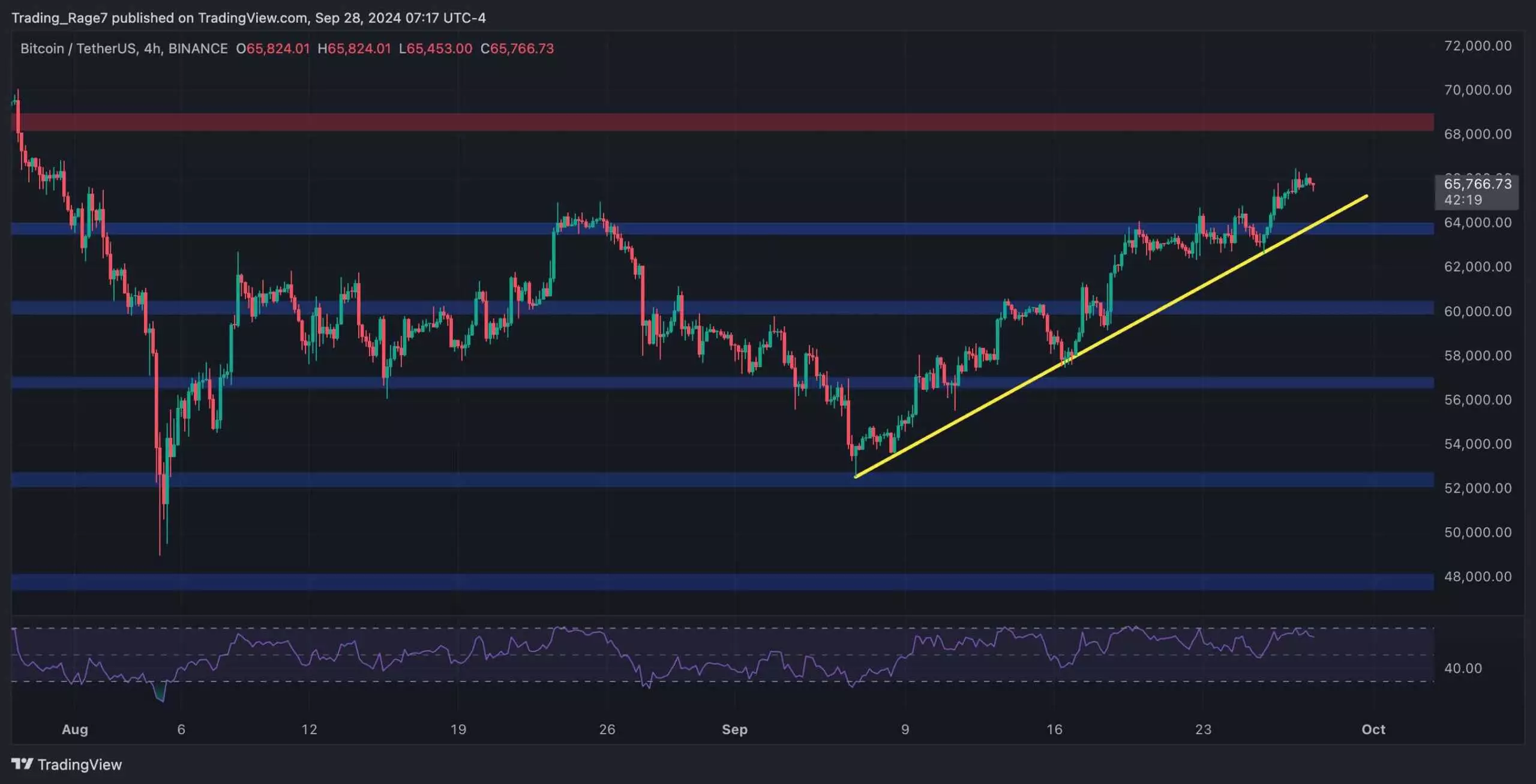The cryptocurrency market has been experiencing significant fluctuations, particularly with Bitcoin, which has recently broken through the pivotal $64K mark. This resurgence in price indicates not only a technical breakout but also suggests that traders are optimistic about reaching another all-time high. The fact that Bitcoin has managed to surpass both this price level and the 200-day moving average, often seen as a crucial indicator of long-term price trends, emphasizes the strength of its current uptrend. Signs of bullish momentum, visible on the Relative Strength Index (RSI), further enhance the case for a continued rise toward the $68K resistance zone.
When observing Bitcoin’s price movements on a shorter time frame, such as the 4-hour chart, a pattern of higher highs and higher lows has emerged since bouncing off the support level at $52K. This upward trajectory not only aligns with bullish sentiment but also signifies the establishment of a supportive trendline. If this trend remains intact, it predicts that Bitcoin could soon reach the elusive $68K threshold. However, a breach of this established trendline might indicate a reversal, leading to a probable dip back to the $60K mark, a scenario that traders must remain vigilant to.
Bitcoin’s price consolidation phase has caused a notable shift in the behavior of short-term holders. A substantial number of these investors, perhaps feeling the heat of market fluctuations, have sold their holdings even at a loss. This reaction is significant as it reflects the emotional volatility often present in bullish markets. The Short-Term Holder Spent Output Profit Ratio (STH SOPR), which provides insight into the profitability of recent coin sales, showed a peak when Bitcoin first touched $70K. However, it’s been on a downward trajectory since then, indicating that many short-term holders have been realizing losses. Alarmingly, this trend was evident as the STH SOPR dipped below the critical level of one.
Implications of Profit-Taking
Despite recent price movements signaling a recovery and potential profit realization for short-term holders, there exists a risk that the selling pressure might outweigh buying demand. In case of excess profit-taking without adequate market demand to offset it, Bitcoin may face further downward pressure. This scenario necessitates a keen awareness from investors regarding market sentiment and the balance between supply and demand, as these factors can critically influence price direction.
While the technical indicators suggest a bullish trajectory for Bitcoin, the dynamics of investor behavior and market sentiment play a crucial role in shaping the cryptocurrency’s future price movements. As trading progresses, maintaining a watchful eye on these developments will be essential for both short and long-term investors alike.















Leave a Reply